Our Progressive Christian Fellowship (PCF) reads the book "Religious Right" 「進思基督徒團契」討論《宗教右派》19/2/2011 by Rev Silas Wong 黃國堯牧師
Progressive Christian Fellowship (PCF) 進思基督徒團契 http://www.hkflash.com/diary/read.asp?id=silaswong&aid=18800101 今午,我到了旺角香港基督徒學會會址出席了進思基督徒團契舉行的《宗教右派》一書的討論會。這是近期該團契每月一次聚會研讀的書藉。今次請了其中一位作者秦晞輝來分享,他寫的一篇為「宗教霸權關注行動」,內中提及他在二OO九年在臉書發起遊行,由恩福堂走至明光社,並引起當時社會關注宗教右派的所為。秦現為中大政治與行政學系二年級學生,中小學時都在基督教學校讀書,故對基督教中的權威和順服教導不以為然。另外,團契也請了尋道會人文組召集人虞瑋倩(貓姐)作主持,她曾是浸信會多年會友,後來毅然離教,並成為反對基督教霸權的先鋒之一。 在是次分享中,大家都把焦點放在基督教叫信徒順服執政掌權的文化,因為權柄是出於神,因此信徒便理所當然地順從。問題是沒有公義和傷害人的宗教及政府權柄,信徒仍要愚忠地順從嗎?就如希德拉殺害無數猶太人及侵略歐洲各國也要接受嗎?所以,要有獨立思考,而不服膺權威,並且要忍受強大的壓力,這才能作個真正敢言的信徒呀!很多教內的人都為著得到政府的利益或地產商的好處而不敢出聲批評,這種埋沒良知的情況比比皆是。 秦晞輝在文章中講說:宗教右派之所以有巨大的影響力,並不是一兩個人的文章,而是因為教會日夜無間的佈道感召。這話一語道破教會洗腦式的訓示,叫信徒失去了敏銳性,就連教會在社會上應有的公義也不顧了。秦在改正教會這般狀況不表樂觀,但世事無絕對,就如今天非洲和中東地區多國的政治變化,也始料不及。
0 Comments
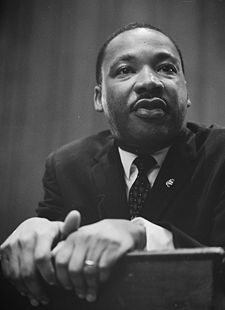 二零一一年一月十六日,尋道會與橄欖山(由聖公會牧師及前立法局議員馮智活牧師創辦)在馬丁路德金日前夕合辦「從馬丁路德金到今天香港民運」紀念聚會。 馬丁路德金(1929-1968)是美國黑人、牧師、博士、民權領袖、諾貝爾和平獎得主,以非暴力不合作運動,爭取種族平等,被捕三十次,並多次入獄,最後被刺殺身亡。美國定一月第三週一為馬丁路德金日,是全國公眾假期。 聚會當日,播放了短片介紹他的生平事跡,他扣人心弦之著名「我有一個夢」演說,及他的最後演說。在討論時段中,馮智活牧師分享了他對香港民主運動的一些獨到體會與見解: (一)馬丁路德金作為社運領袖最令人折服的氣質就是自我犧牲的精神。他的名句「如要犧牲,願那是我」和「可能要流血,但要流的是我們的血」,最令人敬佩。這難能可貴的精神是今天的民運領袖所應該響往與仰望的。馮牧師點名舉例說 Malcom X 及司徒華便具有此高貴特質。 (二)今天香港的民運缺乏一個清晰的中心。像馬丁路德金時的黑人人權問題,或零三年香港基本法廿三條立法時能號召五十萬人上街抗爭的,所有人都關心及願意為之付出的核心課題。 (三)今天香港民運在塑造議題上欠缺清晰。例如貧富矛盾,實在是一個嚴重而逼切的社會問題。但社運界未能簡單、清晰、有效地將此向香港市民解釋,於是未能凝聚關注,無法動員。 (四)香港民運界內部存在私心,互相利用,也欠缺求大同存小異之包容精神。不團結,又何來成功?從基督徒的角度看,香港民運界正急需一份愛鄰如己、無私奉獻的基督精神。 On January 16, 2011, the eve of Martin Luther King Day, Unitarian Universalists Hong Kong and the Mount of Olives (founded by Rev Fung Chi-wood, Anglican priest and former legislator) organized a memorial gathering titled "From Martin Luther King to the Democratic Movement of Hong Kong." Rev Dr Martin Luther King Jr (15 Jan 1929 - 4 Apr 1968) was an American clergyman, a prominent leader in the African American civil rights movement, and Nobel Peace Prize winner. He is best known for the advancement of civil rights in the United States using nonviolent methods. He has been arrested for 30 times and finally got assasinated at an age of 39. King is a heroic leader in the history of modern American liberalism. The third Monday of January is the public holiday in USA devoted to Dr King. In our memorial gathering, short videos were shown of his life story, the famous gripping "I Have a Dream" speech, and his final speech "I've Been to the Mountaintop." During our discussion session, Rev Fung shared his incisive observations and reflections on the present situation of the democratic movement of Hong Kong: 1 The most admirable quality of Dr King is his spiritual quality, namely, the spirit of self sacrifice. "River of blood may have to flow before we gain our freedom," King addressed, "but it must be our blood." It is this noble spirit that today's democratic leaders in Hong Kong should aspire. Rev Fung named Malcom X and Szeto Wah among those rare examples who possess this remarkable spiritual quality. 2 A clear unifying central issue is lacking in the present democratic movement of Hong Kong. During the time of Martin Luther King, the terrible human rights conditions of African Americans in the United States served as a unifying issue. In Hong Kong, back in 2003, the impending national security legislation under Article 23 of the Basic Law had successfully recruited a massive half million demonstration. Such a central issue which could unify the spirit of Hong Kong citizens is now missing. 3 The present democratic movement in Hong Kong is unable to shape a focus to unify the attention of the public. For example, conflicts between the rich and the poor is a serious and pressing social problem. But the social movement sector has not been able to present a simple, clear, and effective message to the people to draw their interest and recruit them to action. 4 Self-interest is commonplace within the pro-democracy community of Hong Kong. They often utilize each other. Tolerance of different ideas is also lacking. Without unity, how can the democratic movement succeed? From the Christian point of view, the democratic movement of Hong Kong is in need of the spirit of love and the spirit of selfless giving of Jesus Christ.  Shocked and saddened by 8 HK tourists losing their lives, and 1 is critically injured, now still in the ICU. So close to us HKers, as many of us travel occasionally and the Philippines is among our popular destinations. www.uuhk.org has changed its look, and a thread is added to the forum, for mourning. May the dead rest in peace. May the injured recover soon. May the families be comforted and supported. Let us reserve a minute of silence to remember the dead, the injured, and their families! We are star dust, yet so precious and valuable. Let us reflect seriously on our short and fragile being. Let us treasure our only life and feel deeply with our only body. Let us live life to the full, to actualize ourselves. Give thanks to Nature for our existence, and use our life wisely to love and help our fellow Humans. Take care! Share with you a UU way to mourn. Listen to Spirit of Life here Spirit of Life, come unto me Sing in my heart all the stirrings of compassion Blow in the wind, rise in the sea, Move in the hand, giving life the shape of justice. Roots hold me close, Wings set me free, Spirit of Life, come to me, come to me. The age of artificial life has come. The universe, including life, continues to be demystified. Is life divinely created by God or just another physical structure subject to human manipulation? God continues to shrink. Paul Tillich's idea of God as "ground of being" perhaps in effect announces that science has chased God to His final refuge of a thin film of mystical "ground" under the feet of everything.
人造生命的時代來臨了。宇宙和其中的生命繼續被去神秘化。生命是否上帝神聖的創造?抑或只是另一個任人拆解和操控的物質結構?上帝繼續萎縮。當蒂利希(田立克)呼喊上帝是「存在的基礎」,他或許實在是宣告科學已把上帝驅趕到祂的最終歸宿:萬物腳下踏著的一層薄薄的神秘「基礎」。 I often consider my life to be a journey of Truth-seeking. As such, I explore a wide range of worldviews, including various world religions and atheism. With Unitarian Universalists Hong Kong (UUHK), I have paid eye-opening visits to the Eastern Orthodox Church and the Bahai community in HK. This time, on May 8, 2010, we visited the Zoroastrian community. Because of the impending visit to a stranger religion, I have done a little homework. To my surprise, members of this little-known religion have made major contributions to the British colony in her early days. More surprisingly still, this small ancient religion has a profound influence on a hugely popular religion in the West, namely, Christianity. Some biblical scholars maintain that, in the Gospel of Matthew, the magi from the east visiting the baby Jesus were Zoroastrian priests. The reason, they say, for inclusion into the narrative the then prestigeous Zoroastrian priests is to enhance the creditability of Jesus as the Messiah. Also, the Bible is full of Zoroastrian concepts: God/Satan, Heaven/Hell, Angels/Archangels, Judgment, and Bodily Resurrection. (1) On the day of visit, when I arrived at the Zoroastrian Building in Causeway Bay, I could spot the symbol of Faravahar on the outer wall (figure 2). The soft-spoken and very friendly priest Homyar explained to us the basics of his religion. The founder was Zoroaster (628-551 BCE); his name appeared in Nietzsche’s famous “Thus Spoke Zarathustra.” Zoroastrianism was the national religion of Persia and the most influential religion in the Middle East at the time of Jesus. Its main God is Ahura Mazda, “Ahura” means creator, “Mazda” wisdom. Good thoughts, good words, and good deeds are her three basic principles. The scripture is Avesta, mainly accounting the life and teachings of Zoroaster. Fire is believed to be the earliest creature, symbolizing God’s eternity and mercy; therefore, all their temples have an ever-lite sacred fire. Regarding adherents’ current religious practices, every member will wear the symbol of Faravahar, the guardian angel, as a necklace. They don’t smoke, for smoking blasphemes the fire. Every youth will pass through an adult ceremony, in which (s)he will start wearing a white underwear with a small pocket in the middle of the collar (figure 3), a symbol of keeping good deeds done every day. The religious identity is inherited and they do not accept converts. Their children are encouraged to marry within the religion. Women married to outsiders will be considered as leaving the religion, men marrying outsiders have not this problem. Priesthood is also inherited, passing only to sons. Homyar joked that he has a daughter and so his line of prienthood has been cut off. The origin of HK Zoroastrians can be traced back to the 17th century, when Muslims conquered Persia. Some Persian Zoroastrians fleed to Mumbai, India, where they were called “Parsee,” meaning a people from Persia. After the Opium War, they followed the British colonists to Hong Kong. More famous figures included Sir Hormusjee Naorojee Mody, a co-founder of the University of Hong Kong. The Mody Road in Tsim Sha Tsui was named after him. Jehangir Hormujee Ruttonjee was the founder of the Ruttonjee Hospital. The Star Ferry was started by Dorabjee Naorojee Mithaiwala. Parsees also helped establish the HSBC Bank and the Hong Kong Stock Exchange. After the introductory lecture, Homyar guided us to visit the prayer hall, the center of which is the sacred fire fed by sandalwood (figure 1). Homyar stressed that they worship not the fire, but God through the fire. Afterwards, we took a fifteen minutes walk to the Parsee Cemetery in Happy Valley, which was built as early as 1852. Celebrities’ names such as Sir Hormusjee Naorojee Mody and Jehangir Hormujee Ruttonjee can be found there. At present, however, there are only about 200 Zoroastrians in Hong Kong (only about 210 000 in the whole world) and they have been largely forgotten by the rest of Hong Kong. This visit added an important piece to the jigsaw puzzle of my life, linking together fragments such as the Star Ferry, the University of Hong Kong, the HSBC, and Christianity. It forced me to reflect deeply whether Christianity is really that special and sacred, as many of her core symbols were merely borrowed from earlier religions. Articles related to Zoroastrianism from Universalist Herald: http://www.universalist-herald.net/2Interf.html http://www.universalist-herald.net/Magi.html 我一直覺得自己的一生是一趟追尋真理的旅程。所以我對不同的世界觀感興趣,包括世界各大宗教和無神論。以前跟尋道會探訪過包括東正教和巴哈依教等世界宗教在香港的群體,大開眼界。今次,於一零年五月八日,跟她拜訪香港的瑣羅亞斯德教群體(又稱「祆教」(音軒,意即天示之教)或「拜火教」)。 因為將要拜訪這個對我來說新奇的宗教,事前找了一些相關資料。原來這個鮮為人知的宗教的教徒在香港開埠時期有著舉足輕重的貢獻。更出乎意料之外的,這個日漸式微的古老宗教原來對基督宗教影響深遠。有學者認為馬太褔音中從東方來探望嬰兒耶穌的幾個博士很可能就是祆教的祭司,並且推論馬太褔音的作者之所以將祆教祭司寫入馬槽故事之中,是希望借助這些當時德高望重的人物建立耶穌作為彌賽亞的可信性。除此之外,《聖經》原來還充滿著祆教的觀念:神與魔鬼之爭、光與黑暗、天堂與地獄、天使與天使長、最後審判、身體復活等等。(1) 拜訪當天,來到銅鑼灣善樂施大廈(外語名稱正是 Zoroastrian Building),在外牆已看見祆教的標誌 Faravahar(圖 二)。招待我們的祭司 Homyar 向我們講解該教之基本。祆教的始創人是瑣羅亞斯德(又譯查拉圖斯特拉,公元前628-551年)。尼采名著《查拉圖斯特拉如是說》就是用了他的名字。這宗教是波斯的國教,亦是耶穌時代中東一帶最具影響力之宗教。它的主神是阿胡拉·瑪茲達(Ahura Mazda,Ahura 意即「創造者」、Mazda意「智慧」)。祆教的三大基本教條是:好的思想、好的話語、好的行為。該教的主要經典是《阿維斯陀》,主要記述瑣羅亞斯德的生平及教訓。他們認為火是神最早的創造,象徵著神的絕對和至善,所以神廟必有長期點燃的聖火。 說到他們的宗教生活,祆教標誌 Faravahar 可說是守護天使,每個教徒都會作頸鍊帶在身上。他們不吸煙,因為褻瀆火。教徒一代傳一代,基本上不接受外人信教。青年在成人禮時會穿上一件白色短袖內衣 (圖三),胸前有一小袋子,象徵盛載每天的好行為。家庭鼓勵子女教內通婚,女子嫁給教外人便算離教,男子娶教外人則無問題。祭司制度是世襲的,只傳男子,Homyar 笑言他有一個女,所以斷絕了承繼。 至於香港祆教教徒的來源,可追朔到公元七世紀,伊斯蘭教征服波斯,部分堅信祆教的波斯人,於是移居印度許孟買。這些人在印度被稱為巴斯人(Parsee),即來自波斯的人。鴉片戰爭後,巴斯人隨英國人來港。香港比較著名的巴斯人有香港大學創辦人之一的麼地(尖沙咀的摩地道便以他命名)、創辦律敦治醫院的律敦治、天星小輪前身九龍渡輪公司的創辦人 Mithaiwala、滙豐銀行和聯交所的創辦成員等。此外,香港旭龢道和碧荔路也以祆教教徒命名。祆教在香港曾被稱為「白頭教」,因為祭司是戴上白帽的。 講解後,Homyar 帶我們參觀祈禱禮堂,內有檀香木聖火(圖 一),這個火,可說是崇拜的中心。但 Homyar 強調他們並非拜火,而是透過火敬拜神。之後,祭司帶領我們步行十五分鐘到達位於跑馬地的巴斯人墓園。該墓園早於一八五二年建成,可以找到一些香港開埠名人如麼地和律敦治家族的墳墓。但時至今日,香港現有祆教教徒只有約二百多人(世界祆教教徒亦只有約廿一萬),在社會上幾乎已被人遺忘。 這次探訪及相關的資料搜集讓我感覺自己的人生砌圖多了一片重要的碎片,將一些零星的片段串連起來(基督教、香港大學、天星馬頭…),亦令我深思基督教是否真的特別神聖,因為她的核心象徵只不過是自然地承傳自更早的其他宗教。 1 Ken Vincent, ‘The Zoroastrians,’ Universalist Herald, Nov/Dec 2009, p. 21. (download "zoroastrians.jpg" below)
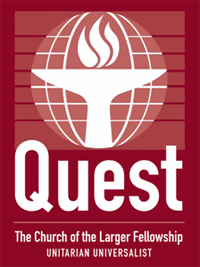 Easter again. The problem of historicity of Jesus' Resurrection is encountered again. Here are some excerpts from sermons and articles in the latest issue (April 2010) of UU CLF's newsletter Quest. In my opinion, of all historically Christian churches in the world, only the post-Christian church UU fully respects atheists and disbelievers of resurrection! 又到復活節。又勾起耶穌有否真的復活這宗千古懸案。傳統基督教會斬釘截鐵禁止信徒不信復活。UU教會則開明得多,充份尊重無神論者及不信復活者的想法和感受。看看以下之UU講道及文章選段便知: But some of you are thinking—there she goes again, using that word God, and I don't believe in God. If you are feeling that way, I think you'll be more comfortable if you understand that when I use the word God, I have absolutely no idea what I'm talking about. For me, God is a word for the Mystery in which we exist... Whether you are a UU Christian, Jew, Buddhist, agnostic, or hard-core atheist, I'd like to invite you to join me as we talk about the Easter story, a story that has meaning for every one of us. The resurrected Jesus tells his disciples that they have a mission—"As my Father has sent me, so send I you." They are to witness to the power of love, to let people know of a love that is more lasting than any earthly kingdom, that is more powerful even than death. They are frightened, and they feel grossly ill-prepared, but there is something about this risen Jesus that has changed them, that has given them strength and purpose and a kind of clarity that they never had before. They are not naïve—they know the dangers they will face, but they know why they are living, and they are willing to die that others might know the power of this love and might be delivered from bondage—the bondage of the flesh, the bondage of desire, the bondage of ego. So what is the real miracle here? Somebody coming back from the dead? I don't think so--the real miracle is what happened to the disciples. They were delivered from their preoccupation with self, from their egotistical plans, and gave themselves to Love. I don't need a corpse rising from the dead to believe in the miracle of Easter. I see lives changing—I see it all the time. I see love doing absolutely amazing things. It comes about, I think, through both intentionality and grace—it comes when we are willing, and when we enter into a partnership with the Holy, and we say, "I just want to do some good in this world, to be some good in this world." Intentionality on our part, and grace from the universe, freely given. Jesus came not to do magic tricks and have us worship him as God--he came to show us that we are of God—and that therefore these miracles of love are possible in our own lives. ---Marilyn Sewell in Why Easter? Easter is the time of year when all nature responds, and people, as children of nature, cannot but do likewise. Who or what can stop the trees and shrubs from budding, the birds from singing, the beehive from awakening, and the animals from mating? And humans, endowed with at least five senses and with the intelligence to appreciate them, must react to the vernal resurrection of Nature. ---Munroe Husbands in There Will Always Be an Easter I am my father's daughter—all our arguments and misunderstandings notwithstanding, that is who I am. And, though he is dead, he lives on in me—in my memory and in my gestures, in the things with which I struggle, in my collections of small wonders, and in my enjoyment of poetry and music, even in my voice, this aging soprano sweetness that his tenor genes, combined with my mother’s alto genes, passed on to me. If this is not resurrection, I do not know what is. Bodies do not survive death. If minds and souls do, I do not know where they gather. But I know that love is stronger than the grave. It survives, and it abides, and all the dead rise again and again in us, giving themselves to us for as long as we will receive them. Happy Easter—may it arrive, and you know it truly. ---Barbara Pescan in Resurrections 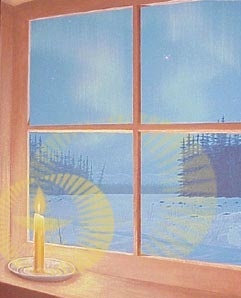 In an age when science is regarded as the best method to learn about reality, the most suitable comprehensive approach to life (i.e., religious stance) is the one which is based on Nature as understood by science. That is Religious Naturalism. The following Minimal Statement defines Religious Naturalism for us. More on Religious Naturalism: Religious Naturalism: www.religiousnaturalism.org Religious Naturalism blog: www.sacredriver.org (see "Spiritual Practice" for real-life practice) UU Religious Naturalists: www.uurn.org Minimal Statement on Religious Naturalism Religious Naturalism is a spiritual and philosophical orientation arising from profound responses to the wonder and mystery of Nature and its emergent manifestations in human creativity and culture. Its views of Nature are embodied in the Epic of Evolution and informed by scientific inquiry, without reference to supernatural explanations. It emphasizes reverence and gratitude for Nature and a deep regard for all life; it recognizes the imperative of planetary sustainability. It supports efforts that honor ecological and cultural diversity, that promote social justice and free inquiry, and that create a more compassionate, rational world where humans and non-humans alike can thrive. www.rnstatement.com 在這個時代,科學被認為是尋找真相的最佳方法。於是,最適切這個時代的人生哲學(宗教),便須建基於以科學認知的大自然。它就是「宗教自然主義」。以下的「宗教自然主義的最小聲明」定義何謂「宗教自然主義」。 宗教自然主義相關資源(英語): 宗教自然主義網: www.religiousnaturalism.org 宗教自然主義博客: www.sacredriver.org (關於實修,可閱 "Spiritual Practice" 頁) UU 宗教自然主義者: www.uurn.org 宗教自然主義的最小聲明 宗教自然主義是一種靈性上及哲學上的方針。它產生自深刻地回應大自然的奇妙與神秘,及其呈現之人類創造力及文化。它對大自然的理解源自科學研究,體現在「進化之史詩」之中,而並不參考超自然的解釋。它強調對大自然的崇敬與感恩,和對所有生命的尊重。它確認必須維持地球的可持續性。它支持以下的努力:尊重生態和文化之多樣性,促進社會正義和自由探索,創造一個更慈悲及更合理的世界致使人類和眾生都能夠蓬勃發展。 (譯自 www.rnstatement.com ) 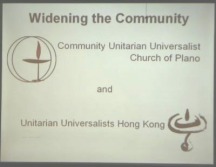 On January 11, Unitarian Universalists Hong Kong (UUHK) becomes a Partner Church of the Community UU Church (CUUC) of Plano, Texas, thanks to the UU Partner Church Council (UUPCC). On Sunday, January 24, CUUC celebrated our Partner Church relationship with a special Sunday service. See pictures here: www.communityuuchurch.org/pages/HongKong . I am very excited, feeling a sense of lively connection with a vibrant UU community on the other side of the globe. We can concern, support, and co-operate with each other. How wonderful and warm it is to be a part of the world UU community! 伙伴教會 於本年一月十一日,尋道會與美國德州 Plano UU 社區教會在 UU 伙伴教會評議會之下結成「伙伴教會」。在上星期日該教會的一個特別崇拜聚會中,他們慶祝與我們的「伙伴教會」關係。我感到非常興奮。看到此處的聚會圖片,我感到很奇妙,能與地球另一邊的一個活生生的 UU 群體連起來,互相記念、支持、合作。我們是世界 UU 群體的一份子,何等奇妙與溫暖! Prayer and Nonduality
by Jay Michaelson Tikkun November/December 2009 Jay Michaelson is the author of Everything is God: The Radical Path of Nondual Judaism, from which this article was adapted. Michaelson advocates nonduality---God and us, everything indeed, are one. But prayer (we pray to God) clearly assumes duality (the twoness of God and us). This article addresses this problem of conflict between nonduality and prayer. The following quotes highlight the main points: God does not exist---but is Existence itself. "All is one." Logically, if God is infinite, then everything is God. Nonduality...But if there is no self, what is there? A Buddhist would say everything is an empty play of conditions: ...genetics, ...learned behaviours, and so on. A nondual Jew or Christian uses the word "God" to refer to those conditions. Not just the language of prayer but its fundamental assumptions are rigorously personalistic and dualistic; it implies, and sometimes actually states, that "I" am here and you, God, are there, and I am asking you to do things in the world. ...ready nondualistic answers to the traditional theological problem of prayer: (1) In the contemplative mode: prayer fills the mind with salutary reflections on beneficence and grace, circumscribing the selfish inclination; (2) ecstatic practice: prayer as uniting with God magically by means of words, song, movement... But all this seems to miss the point of why we pray in the first place. Transforming prayer into meditation or magic or self-reflection turns it into something other than prayer, which has to do with the yearnings of the heart. ...prayer is, at its core, devotionalistic in nature. ...a time for the heart to open. ...Devotion implies a devoted-to. It implies duality. ...traditional prayer is intellectually incoherent. If everything happens as it must, rather than as it should, then what is the point of wishing really hard for it to be otherwise? Ironically, when nondual contemplation actually succeeds...dualistic prayer language suddenly flows much freer...illusion of separation drops away. So too do inhibition and the pretension of knowledge. A great "I don't know" replaces the arrogant claims to metaphysical certainty. It is the negative theology of the Cloud of Unknowing, the limits of reason according to Kant, the limits of language according to Wittgenstein, the mystery of Being according to Hegel and Heidegger. The "I don't know" is the absurdity of Zen, the transrational of Ken Wilber...And so prayer flows from surrender---chiefly the surrender of "I." ...It is a Divine role play, ...This is nondual prayer... 祈禱與非二元論 "Prayer and Nonduality" 一文載於前進派 (progressive) 猶太教期刊 Tikkun。作者 Jay Michaelson 著有《一切皆是神:非二元猶太教的激進路徑》。他倡議非二元猶太教,即視神與人為一、一切為一。在非二元論之下,祈禱構成很大的問題,因為人向神祈禱明顯假設我、神二分之二元論。這篇文章就是要解決這個問題。 目前有兩大類解答方式:祈禱作為默想、祈禱作為狂喜活動。祈禱作為默想,目的是讓默想者的心靈充滿感恩與慈悲,從而征服自私的本性。祈禱作為狂喜活動,是指以獨特的言詞、音樂、及身體動作神秘地與神聯合。 作者指出,這兩個答案都忽略了一個簡單的問題:我們為何祈禱?祈禱是內心的呼求,是心靈的倘開,是一種奉獻。而奉獻是有對象的,即假設二元論。 作者提出,如果非二元祈禱成功,二元祈禱語言反而更暢通。我們明白到沒有「我」,是神在做角色扮演,而兩個角色的互動是需要對白的。在非二元祈禱裡,「我」被放下,分別心便可消除。知識的抑壓性和假裝也會消失,不再傲慢地以為自己擁有形而上的肯定,而是被一個大大的「我不知」取代。這就是康德的理性的界限,維根斯坦的語言的界限,黑格爾和海德格爾的存在的神秘性,與及禪宗點出的荒謬性。 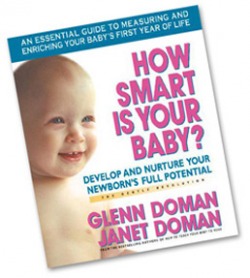 My wife is expecting a baby boy on 8 Febuary 2010. So I must brush up my baby-rearing skills. A great source of information for nurturing a young baby's potential is The Institutes for the Achievement of Human Potential in Philadelphia. The Institutes have been serving brain-injured children since 1955. Their experience eventually resulted in a series of books and materials for enhancing normal children's brain growth. I am reading the Institutes’ founder Glenn Doman's "How Smart is Your Baby?" which is essentially a guide to enriching a baby's first year of life. Surprisingly, a passage of the book touches on the philosophical debate between physicalism and idealism* regarding the nature of the mind. The book clearly favours physicalism. Page 21 of the book reads: "It is very important to remember that when we speak of the human brain we are speaking of that physical organ that occupies the skull and the spinal column and weighs three to four pounds. "We are not speaking of that nebulous thing called 'the mind.' The confusion between the organ called 'the brain' and the idea called 'the mind' has created problems in the past. "The mind has defied any agreed upon definition of what it is or what it is not. The brain, however, is material. It is easier to study. We can see it, feel it, and smell it. We can even taste it if we are inclined to do so. "The brain is a nice, clean orderly organ whose job is to take in data and process that data in such a way that its owner can relate to his environment appropriately at all times." Here, the idea is simple. "Mind" is vague and cannot be defined clearly. We are simply unable to study it. The brain, on the other hand, is something which we are able to study. For something that cannot be defined and we are unable to study, like "mind" and "God," all we can do is to remain silent. Only for something that we are able to understand, like all physical entities, that we can study and obtain meaningful knowledge of them. Ancient Chinese wisdom echoes here. Confucius said, "Respect ghosts and gods, and stay away from them." Also, "We know so little about this life, how can we know anything about after death?" Confucius teaches to be reserved and remain silent for vague and unknown things. Physicalism might not be the only explanation, but physicalism is the only explanation we can understand and handle. I am a physicalist because I am only able to understand the physicalist universe. *Physicalists argue that only the entities postulated by physical theory exist, and that the mind will eventually be explained in terms of these entities as physical theory continues to evolve. Idealists maintain that the mind is all that exists and that the external world is either mental itself, or an illusion created by the mind. http://en.wikipedia.org/wiki/Philosophy_of_mind 物理主義:「心靈」是大腦現象 我太太很可能於本年二月八日把男嬰誕下。所以,我必須惡補育嬰術。一個重要的資料來源是在費城的人類潛能促進學院。該研究所自1955年已經為腦損傷的兒童治療。他們後來發現他們的經驗可以幫助正常兒童的大腦發展。我正在讀學院創始人格連杜曼博士的《你的寶寶有多聰明?》這本書基本上是一個豐富嬰兒第一年生命的指南。出乎意料地,這本書輕輕涉及關於心靈本質的哲學辯論:物理主義和理想主義之間的爭論*。這本書明顯傾向物理主義。第21頁的內容如下: 「這點非常重要。當我們談到人類的大腦,我們說的是,一個位於頭骨和脊柱之內的,重量為3到4磅的身體器官。 「我們不是說一個所謂『心靈』的模糊慨念。以往,被稱為『大腦』的身體器官與被稱為『心靈』的理念曾經造成一些混淆。 「心靈從來沒有被成功地定義過它是甚麼或者不是甚麼。大腦則不同。它是物質的,更容易被認識。我們可以看到它,感覺它,嗅到它。我們甚至可以品嚐它,如果你有興趣的話。 「大腦是一個很好的,結構有序的器官。其任務是收集和處理數據,以適當地對環境作出反應。」 這裡非常簡單。所謂「心靈」的定義是含糊的,不能明確界定。我們根本無法對其進行研究。大腦則肯定是一樣存在的東西,我們可以研究它。不能被定義和無法被研究的東西,如「心靈」和「上帝」等,我們所能做的就只是保持沉默。只有我們有能力處理的東西,例如所有的物理實體,我們才可以學習它們以取得有意義的知識。 這與中國古代智慧不謀而合。孔子說:「敬鬼神而遠之!」,又說:「未知生,焉知死?」。孔子對虛玄未知之事持保留態度及保持沉默。物理主義可能不是唯一的解釋,但唯有物理主義是我們可以理解和處理的。我是物理主義者,因為能力所限,我只能明白物理主義的宇宙。 *物理主義者認為一切心靈現象都是由物質的大腦產生;心靈並不存在。理想主義者認為只有心靈存在,整個所謂物理世界都只是由心靈產生的幻覺。 |
Categories
All
Archives
February 2022
AuthorAlex from UUHK |
||||||
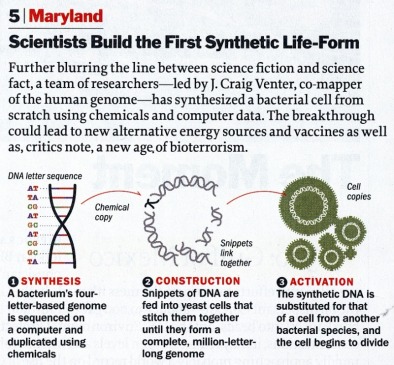
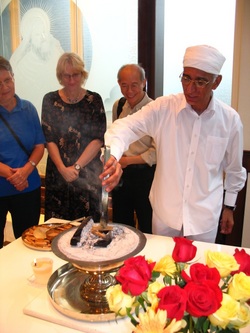

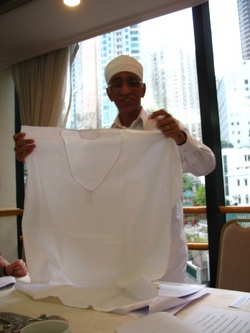
 RSS Feed
RSS Feed
